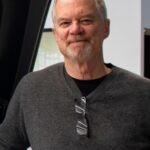Jim Morgan: The success of your product determines the success of your organization – and every organization creates a product. It’s just that some don’t realize it. But the ones that do and who work hard to improve their product development and delivery capability have a major advantage, not only in achieving their value-creating mission, but also in building an environment where their people can thrive. So, our aim is to build a community of like-minded people and organizations to work with us, to improve their own development capability and advance our understanding within this community of practice. Consistent with that aim, we’ve created a series of videos in which people from a variety of different organizations share how they’re putting these principles into practice.
Understand Before You Execute
It’s essential that you understand your customer and their context before you start detailed development work. Dave Pericak, director of Icon Products at Ford Motor Company, is going to share with us how the Ford team worked relentlessly to understand their customer for the new Bronco, a product that’s shattering pre-order records.
Dave Pericak: It’s extremely important to understand before you execute, because when you are designing the next best thing, or in our case, bringing back a legend, you have to put the thought into that process. You’re trying to create an experience – a lifestyle actually – getting in touch with this customer again, understanding what they want Figuring out where their pain points are at, and then understanding how to interpret that in the form of a Bronco.
It’s about stepping back for a moment and really thinking through your design, thinking through all the possibilities, rapid prototyping – we did a ton of rapid prototyping – to get the designs where they needed to be. And so it’s not about just randomly thinking up ideas of what to do. It’s the more deep thinking that goes into that, around how it’s going to actually play out. How will people use it? How are you going to manufacture it? And when we got it out on the trails, not only did it prove to be everything we wanted it to be at high speed, where the surprise came in was exactly how good it was in the rock crop.
Jim Morgan: These principles are not just for physical commercial products. The clinical design and innovation team for Michigan Medicine talks about how they put this principle to work in designing new clinical processes.
Paul Paliani, Director, Clinical Design and Innovation, Michigan Medicine: We are a team of project managers, industrial engineers, nurses, and, business analysts. We look at specific episodes of care.
Heidi McCoy, Project Manager, Clinical Design and Innovation, Michigan Medicine: The study phase and digging deep actually helps with not doing the rework later.
David Hyatt, Industrial Engineer, Clinical Design and Innovation, Michigan Medicine: We get some pushback initially. When we’re in that study phase, a lot of people just want to jump to solution.
Carli Van Otteren, Industrial Engineer, Clinical Design and Innovation, Michigan Medicine: By being more deliberate in our study phase, our programs have seen better sustainment as we’ve gotten to the end of our program. That deep dive into the initial discovery really sets up our improvement work and when we go to make pilots and changes much more successful because we’ve actually taken the time to slow down, get to that real root cause.
It’s a Team Sport
Jim Morgan: Development is definitely a team sport. In fact, it might be the ultimate team sport, and LPPD principles and practices help to improve your communication, your coordination, and your decision-making. Schilling Robotics, a division of TechnipFMC, shares how these practices help them develop one of the most technically advanced complex subsea ROVs [remotely operated vehicles] in the industry, an ROV that has revolutionized subsea productivity.
Scott Fullenwider, Design Group Leader, Schilling Robotics, a division of TechnipFMC: This is an incredibly technical challenge. We had to learn a lot of new technology, but we also had to change the way in which we worked because the technology required the systems to be more highly integrated.
Andy Houk, Engineering Department Manager, Schilling Robotics, a division of TechnipFMC: We had really reached an [inaudible] on improvements that we were making in the engineering department, and we were looking for ways to reach another level.
Obeya is literally the Japanese term for big room, but it means so much more than that.
Scott Fullenwider: There’s the visibility of the issues. There’s the visibility of the work going on. And then there’s the culture that it creates surrounding actually moving forward in the project.
Hannah Schell, Operations Improvement Manager, Schilling Robotics, a division of TechnipFMC: I think the first time that I’d ever seen a technician or a lead from the floor be pulled into one of those meetings pretty early on. And that, that feels really good. It really helped close the gap in information input between ops and engineering. So to have what they’re looking at really gives people a chance to see what’s coming their way and prepare for it, which is really different.
David Furmidge, Director, New Product Development, Schilling Robotics, a division of TechnipFMC: It was huge scope, huge innovation ,and huge integration of both our operations and engineering teams. And if we had not used the processes that we did use, our ability to get it into production in that timeframe, it would have been impossible.
Building in Learning and Knowledge Reuse
Jim Morgan: The ability to learn effectively and reuse that knowledge across projects is the hallmark of great development organizations. Clive Glover from Pall Biotech shares how they used a fixed and flexible approach to knowledge reuse in order to speed the development and delivery of a Covid vaccine to the people who needed it.
Clive Glover, Director of Strategy, Pall Biotech: We started getting involved with the University of Oxford around the beginning of March, which was just as the seriousness of the situation was really starting to be understood, certainly in Western Europe. Knowledge reuse is absolutely crucial in this. And what we’ve observed is that 80% of the work in scaling up any biological process is the same. So around about two years ago, what we did was we decided that we were going to formalize a lot of this experience that we’d developed over time. We came up with these standardized manufacturing processes targeted toward specific therapeutic types. We were able to deliver equipment and begin the initial commercial manufacturing run at one of our manufacturing partners. That process, in fact, took us eight weeks. Now, considering that our previous record for delivering one of these processes was about nine months, you can appreciate that that is a significant acceleration of development of these kinds of processes.
People First
Jim Morgan: People First, it’s a potent and actionable approach to hiring, developing, organizing, and leading people. And it’s woven throughout the LPPD principles. Alan Mullaly, who led historic turnarounds at both Boeing Commercial and Ford Motor Company, talks about what people first means to him.
Alan Mulally: I’ve learned over the years, the essential part of the management system, and it’s all about people. That’s where the People First comes from. Everybody needs to be included. It’s so important to come together around a compelling vision for the product, the strategy for achieving it, and then, of course, the relentless implementation plan, which is the business plan review meeting every week, also the behaviors. So, there’s the process part, and then there’s the behavior part where everybody knows the plan; they know the status; they know the areas that need special attention. Attitude’s really important. Propose a plan, positive, find a way respect each other, listen to each other, and trust this process of working together.
Designing Value Streams
Jim Morgan: Designing entire value stream; that is, every step required to deliver value to your customer – instead of your product in isolation – is the defining characteristic of LPPD.
Jaime Ogbourne explains to us how Pella has integrated operational readiness requirements into their development system in order to improve product launch and operational performance.
Jaime Ogbourne, Continuous Improvement Manager, Pella Corporation: Our regional goals for lean product development was we wanted to get a 50% increase in how much product to market we could deliver and a 50% reduction in lead time in that time to market. In fact, we’d far beaten our goals. We’d reduce lead time, but we created a new problem. They had a lot of pain and frustration on the operation side of the business, simply the stuff we were launching, getting it running very well and helping plan for all those. So ORLs is really a countermeasure to some other improvement that we already did. So we developed a list of 24 items that we said, if we get these, it takes care of 90% of our issues.
Synchronized Workflows
Jim Morgan: Creating flow is a fundamental lean tenet. And in development, we have to synchronize multiple concurrent workflows from various functional organizations. Alison Seward, from GE Appliances, tells us how her program organized into fishbone teams in order to synchronize the work of people from across the organization.
Alison Seward, Program Senior Director, GE Appliances, a Haier company: So, the team that I’m able to lead is a very large group. It’s about 50 or so program members, and they encompass nearly every function that we have here. So we’re actually structured into what we call fishbone teams, and each fishbone represents an area of the assembly process. So, for example, our door team is actually made up of the cross-functional members that are addressing the door. Each group has a target for their material costs or labor costs, all of their key metrics so that they know what success looks like. So our team loves our decision diamonds. It really gives us a chance, by fishbone team, to say, what are the next seven or eight decisions that we need to make, and how can we lay those out on a timeline so that we can get the right information to make them?
Jim Morgan: In 2021, we’ll be sharing one video for each of the six principles with the full stories from these and other awesome organizations. Thanks for watching.
Designing the Future
An Introduction to Lean Product and Process Development.






